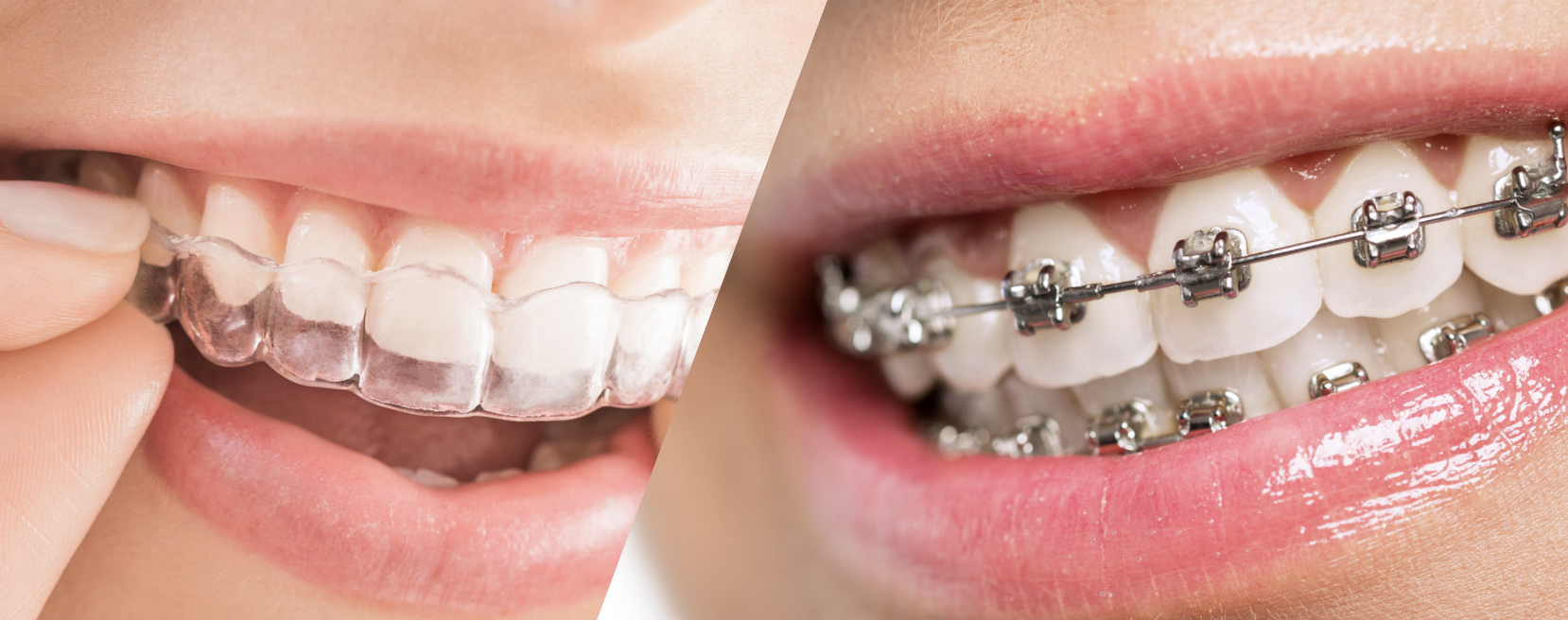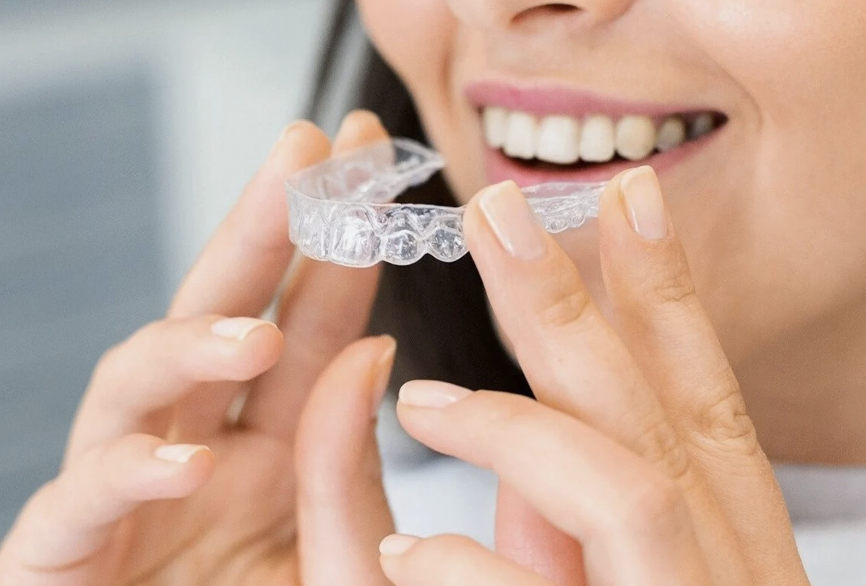Is Invisalign Better Than Traditional Braces?
March 27th, 2024 | 5 min read

Choosing between Invisalign and traditional braces is a significant decision for anyone looking to improve their smile.
At NYC Smile Design, we've guided countless patients through this very choice, leveraging our experience to illuminate the path toward the most suitable option for each individual.
This blog aims to extend that guidance to you, emphasizing the importance of making an informed decision that aligns with your unique needs and lifestyle. With insights drawn from our practice and the successes of our patients, we're here to help you navigate the journey to your ideal smile.
Invisalign vs Traditional Braces
When it comes to orthodontic treatment, choosing the right option is crucial for achieving your desired results. The decision often comes down to Invisalign and traditional braces, each offering distinct advantages. Invisalign, with its clear, plastic aligners, promises a discreet way to straighten teeth, making it an attractive choice for those concerned about the visibility of their orthodontic treatment. On the other hand, traditional braces rely on metal or ceramic brackets and wires to correct teeth alignment and are celebrated for their effectiveness in addressing a broad spectrum of orthodontic issues.
Understanding Invisalign
Invisalign represents the cutting edge of orthodontic technology, providing a modern solution to teeth straightening without the use of conspicuous metal hardware. This system uses a series of custom-made, clear aligners that fit snugly over your teeth, gradually moving them into the desired position. The aligners are virtually invisible, offering an aesthetic advantage for adults and teens alike who prefer to maintain a natural appearance throughout their orthodontic journey.

Understanding Traditional Braces
Traditional braces have a long-standing history of effectively correcting a wide variety of orthodontic problems, from simple misalignments to complex bite issues. They consist of metal or ceramic brackets that are attached to each tooth, connected by wires that are periodically tightened by an orthodontist or dentist to guide teeth into alignment.
Weighing the Benefits
When considering orthodontic treatment, understanding the benefits of each option can guide you to the best choice for your smile.
Invisalign Pros
Invisalign has revolutionized the way we think about orthodontics, offering a blend of aesthetics, convenience, and comfort. Its clear aligners are designed to be nearly invisible, catering especially to adults and teens who wish to straighten their teeth without the visual impact of traditional metal or ceramic braces. This option stands out not just for its aesthetic appeal but also for the lifestyle flexibility it offers. The aligners are removable, simplifying the processes of eating, brushing, and flossing, and eliminating many of the dietary restrictions associated with braces. Additionally, Invisalign is often praised for its comfort, as the smooth, plastic aligners lack the sharp edges of metal brackets and wires, reducing irritation to the cheeks and gums.
Extensive research and meticulous analysis of patient data have played a pivotal role in enhancing the efficacy of aligner treatments. These efforts have not only led to improvements in the materials used but have also revolutionized the way plastic aligners are utilized to achieve intricate tooth movements. As a result, Invisalign has emerged as a highly versatile option capable of addressing a wide range of orthodontic issues.
One of the key advantages of Invisalign lies in its ability to provide comprehensive coverage of the entire tooth surface. This level of coverage affords the dentist a remarkable degree of control when it comes to shifting teeth into their desired positions. Moreover, advancements in aligner technology have enabled practitioners to manipulate root position and torque with precision, thereby facilitating more nuanced and effective treatment outcomes.
Furthermore, innovations in tooth-colored attachments have further expanded the scope of Invisalign treatment. These attachments, designed to adhere to teeth with various shapes and contours, facilitate more complex movements and enhance retention. By leveraging these advancements, treatment plans can be tailored to address even the most intricate orthodontic challenges, offering patients greater comfort, convenience, and ultimately, satisfaction with their results.

Traditional Braces Pros
Traditional braces boast a rich history of successfully addressing an extensive array of orthodontic concerns, ranging from straightforward misalignments to intricate bite irregularities. Renowned for their reliability, traditional braces remain a stalwart solution for achieving optimal tooth alignment. One of their standout features is their cost-effectiveness compared to alternatives like Invisalign, making them an attractive option for patients seeking effective treatment without breaking the bank.
Moreover, traditional braces alleviate the need for the self-discipline often associated with removable aligners like Invisalign. With traditional braces, there’s no requirement to remember to wear or remove aligners throughout the day, offering a hassle-free treatment experience. This aspect is particularly beneficial for individuals who may find it challenging to adhere to the stringent wearing schedule of removable aligners, which typically necessitate wearing them for up to 22 hours daily. By eliminating the need for constant patient intervention, traditional braces ensure uninterrupted treatment progress, providing peace of mind for both patients and orthodontists alike.
Each orthodontic option brings its own set of advantages, tailored to meet different needs, preferences, and lifestyle considerations. Invisalign offers a nearly invisible solution, making it ideal for those who prioritize aesthetics or require a treatment option that fits seamlessly into their professional or social life. Plus, its removable nature allows for easy maintenance of oral hygiene and dietary flexibility, as you can simply remove the aligners during meals. On the other hand, traditional braces boast their own advantages. While they may not be as inconspicuous as Invisalign, they are often more cost-effective, making them a preferred choice for individuals mindful of budget constraints.For some, the fixed nature of traditional braces also eliminates the need for self-discipline, as there’s no temptation to neglect to wear them, ensuring consistent progress throughout treatment. Ultimately, the decision between Invisalign and traditional braces hinges on a careful consideration of your personal goals, dental needs, and lifestyle factors.
Understanding The Fallbacks
While both Invisalign and traditional braces offer significant benefits, it’s equally important to consider their potential drawbacks. Each treatment option has its own set of challenges that may influence your decision.
Invisalign Cons
Invisalign, despite its numerous advantages, comes with its own set of considerations. One of the primary concerns for many is the cost; Invisalign treatment can be more expensive than traditional braces, making it a significant factor in the decision-making process. Additionally, the success of Invisalign heavily relies on the wearer’s discipline. The aligners must be worn for approximately 22 hours a day to achieve the desired results, requiring a commitment to wearing them consistently, except during eating and oral hygiene routines.
Traditional Braces Cons
Traditional braces, while effective for a broad spectrum of orthodontic needs, also present their challenges. The most apparent is their visibility. Unlike the nearly invisible aligners of Invisalign, metal braces are noticeable, which can be a concern for self-conscious teens and adults.
Oral hygiene presents another hurdle. The brackets and wires of traditional braces can make cleaning teeth more complicated, requiring special tools and techniques to maintain oral health during treatment. This increased difficulty can sometimes lead to plaque buildup and, in some cases, tooth decay if not managed properly.
Discomfort is another factor to consider with traditional braces. The metal or ceramic brackets and wires can irritate the inside of the mouth, especially in the initial stages of treatment or after adjustments. While this discomfort usually diminishes over time, it is a consideration for those with sensitive mouths.
Another factor to consider with traditional braces is bracket loss or detachment. Occasionally, during treatment, a bracket may become loose or lost. You may experience the wire sticking out at that site, causing discomfort. This requires patients to go into the office to have the bracket replaced or bonded back in.
Both Invisalign and traditional braces come with their unique challenges. Understanding these fallbacks is crucial in making an informed decision that aligns with your personal preferences, lifestyle, and orthodontic needs.

Factors to Consider When Choosing
When deciding between Invisalign and traditional braces, consider your aesthetic goals, budget, dental health, and lifestyle. It’s crucial to weigh these factors against the benefits and limitations of each option. Consulting with an experienced dentist or orthodontist is essential.
Your Alignment Journey
Both Invisalign and traditional braces have their pros and cons. The best choice depends on your unique orthodontic needs, lifestyle, and personal preferences. By understanding the differences between these two options, you can make an informed decision about your orthodontic treatment.
If you’re considering orthodontic treatment and want to explore your options, we invite you to schedule a consultation with NYC Smile Design. Our team is ready to help you navigate your choices and embark on the journey to a beautiful, confident smile.
Topics:

